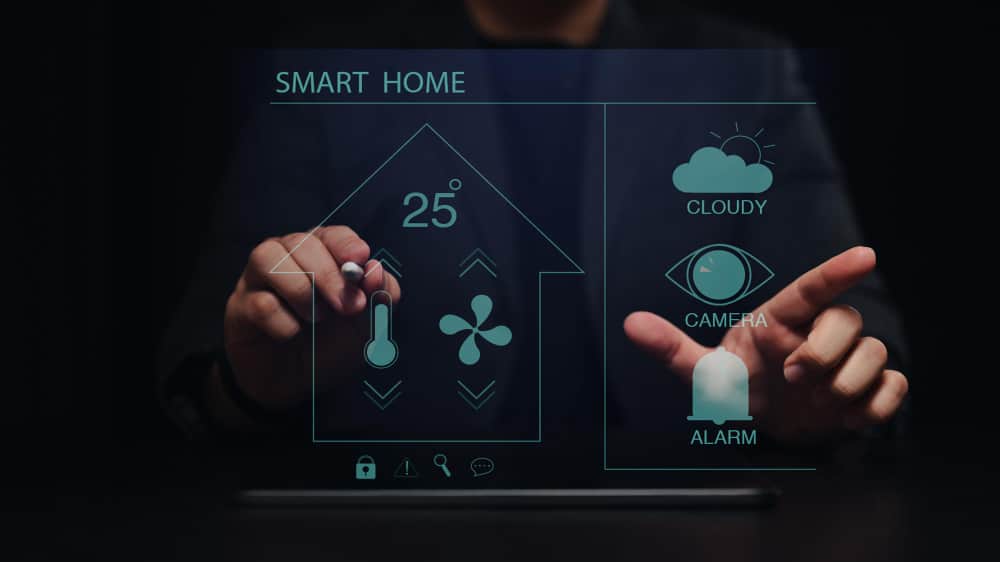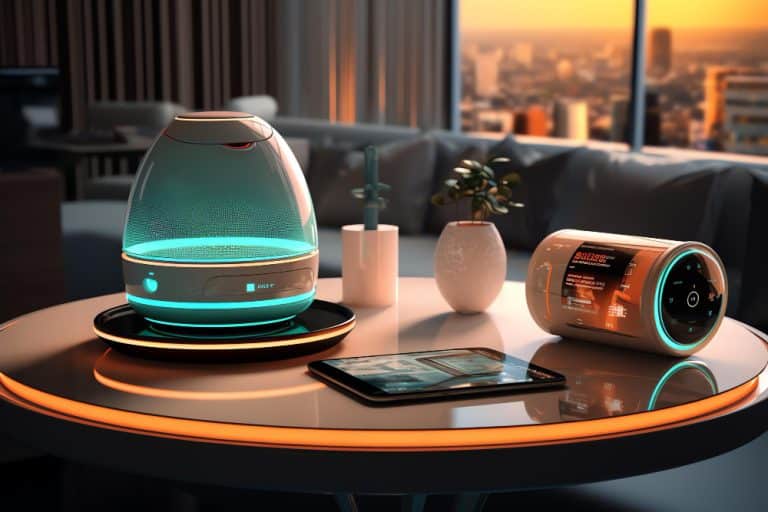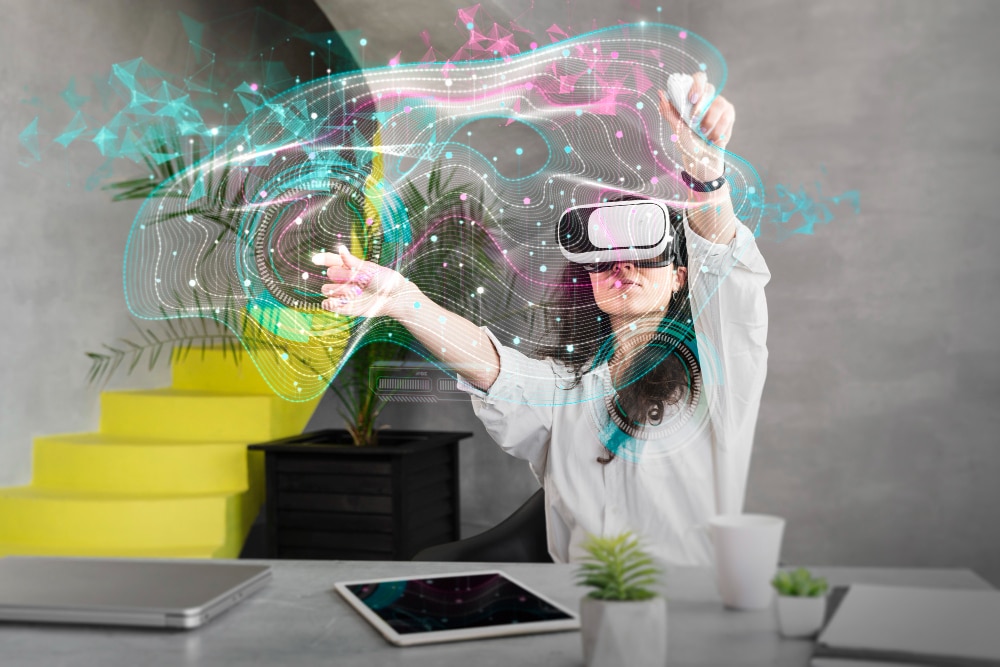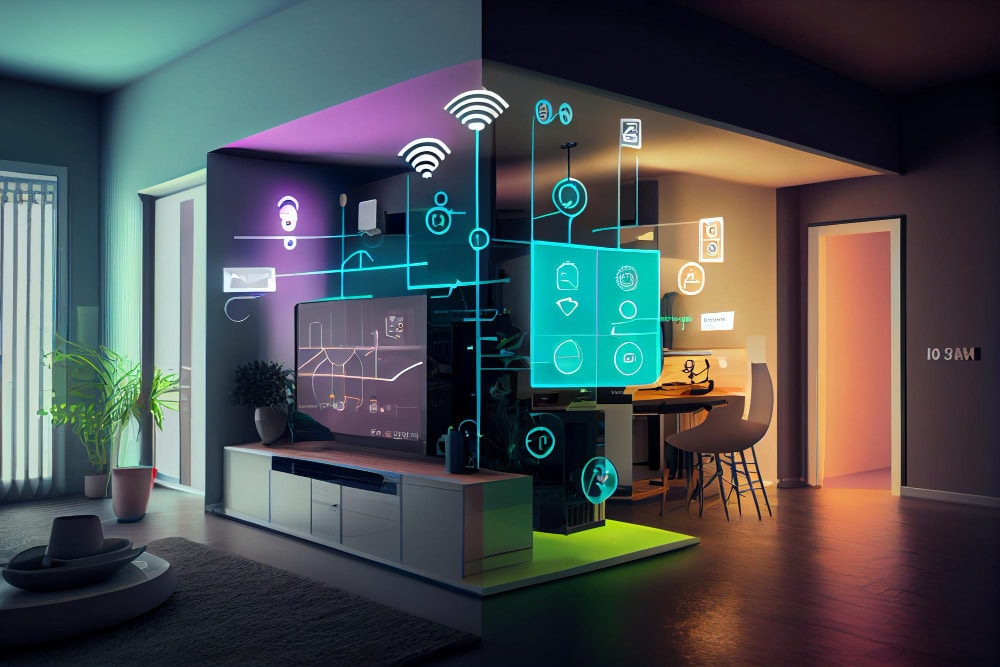The merging of technology and design is more prevalent than ever in our extremely interconnected society. Once the domain of the tech-savvy, smart technology has made its way into our homes, workplaces, and even our apparel. Nonetheless, this integration does not require giving up fashion or aesthetics. Creating beautiful and useful goods and settings has become much easier thanks to the integration of design and smart technology. Let’s look at how app development companies are blending smart technology seamlessly and harmoniously with design and aesthetics.

The Evolution of Smart Technology: Beyond Function to Form
Traditionally, technology was often seen as a necessary but unsightly addition to our lives. Bulky devices, tangled cords, and blaring LEDs dominated our living spaces. As technology advanced, designers realised that technology should be seamlessly integrated into our lives to enhance our experiences rather than distract from them.
The Elegance of Smart Home Design:

The smart home industry serves as a prime example of the harmonious coexistence of technology and design in contemporary times. Our daily lives are experiencing a significant shift due to innovative smart home devices like thermostats and lighting control systems. What distinguishes present-day smart home design is its remarkable capacity to integrate these technological innovations into the overarching aesthetic of our homes.
-
The Art of Wearable Technology
The way that design is approached in the field of wearable technology has undergone a significant change. Wearables are no longer bulky or unsightly, which is a good thing. Reputable businesses like Apple and Fitbit have dabbled with the production of stylish, useful gadgets that meld into our daily lives. These devices not only monitor fitness metrics but also contribute to one’s style with effortless grace.
-
Furniture and Design: A Technological Revolution
Technology’s influence on furniture design has left an indelible mark. Smart furniture, like couches featuring built-in chargers and coffee tables equipped with integrated wireless speakers, has ushered in a new era for our living spaces. These innovative products transcend mere utility, contributing significantly to the overall ambience of a room while maintaining their primary functionality.
-
Integration of Smart Technology in Art and Decor:
In the art and décor world, the integration of smart technology has opened up new avenues for creativity. From interactive digital artworks to LED-infused sculptures, artists and designers are finding innovative ways to blend technology with aesthetics. These pieces can change and adapt to the viewer’s presence or the environment, creating a dynamic and engaging experience.
-
Smart Technology in Architecture and Building Design:
Architects are increasingly incorporating smart technology into building design. Smart glass that can adjust its transparency to control light and temperature, or buildings with automated shading systems, are just a couple of examples. Such integration not only enhances the comfort and energy efficiency of spaces but also contributes to the overall architectural aesthetic.
-
Smart Fashion: Style Meets Wearable Tech:
The world of fashion has seen a significant evolution with the introduction of wearable technology. Smart clothing with integrated sensors and connectivity offers not only functional benefits but also the ability to adapt to personal style preferences. Whether it’s garments that change colour based on your mood or accessories that double as fitness trackers, fashion is no longer just about aesthetics; it’s about functionality too.
-
The Role of Voice Assistants and AI in Design:
Voice assistants like Amazon’s Alexa and Apple’s Siri are becoming integral parts of our lives. They’re not only convenient but also essential for creating seamless, smart environments. Designers are now considering how these voice-activated systems can be integrated into home and product design. This integration goes beyond just functionality and adds a futuristic, high-tech feel to the environment.
-
Augmented and Virtual Reality in Design:
Augmented and virtual reality are not just for gaming and entertainment. These technologies have made their way into various design applications. From virtual home tours to interior design planning in augmented reality, these immersive experiences allow users to visualise designs and make informed decisions before implementing them in the real world.
Balancing Aesthetics and Functionality
The key to successfully merging style with smart technology lies in striking the right balance between aesthetics and functionality. Here are a few principles that designers are applying to achieve this balance:
- User-Centered Design: Designers are prioritising users in their designs, creating intuitive and user-friendly interfaces that make technology less obtrusive in our daily lives.
- Material Choice: The choice of materials is crucial to seamlessly integrating technology into design. Textiles with embedded sensors, glass with augmented reality overlays, and wooden finishes with concealed lighting are just a few examples.


- Minimalism: Minimalist design principles are often applied to ensure that technology doesn’t overwhelm the overall aesthetic. This involves removing unnecessary elements, streamlining interfaces, and focusing on essential features.
- Customization: Many smart devices now allow for customization of appearance. This gives users the ability to adapt the look of their devices to their tastes, ensuring that the technology complements their style.
Challenges in Merging Design with Smart Technology
Although merging design and smart technology is exciting, it poses several challenges that designers and technologists must overcome.
- Privacy Concerns: Concerns about data privacy and security arise with the integration of smart technology into our homes and clothing. Designers must prioritise protecting user data in addition to creating visually appealing products.
- Sustainability: Many smart devices have a limited lifespan and can contribute to electronic waste. Designers are increasingly focusing on sustainability by using eco-friendly materials and designing products with longevity in mind.
- Cost: Cutting-edge design and technology can be expensive, making accessibility a challenge.
Conclusion:
The merging of design and smart technology represents a thrilling and transformative trend in our lives. We no longer have to choose between aesthetics and functionality. The focus has shifted to seamlessly blending these elements to enhance our daily experiences. Through the partnership of creative designers and innovative technologists, we anticipate witnessing a continuous emergence of chic and refined implementations of smart technology in the coming years. The potential for innovation is boundless, and we eagerly await a promising future. Spearheading this blend of creativity and advancement is 5StarDesigners, a renowned mobile app development company with a notable history of crafting state-of-the-art solutions that effortlessly combine elegance with intelligence.



